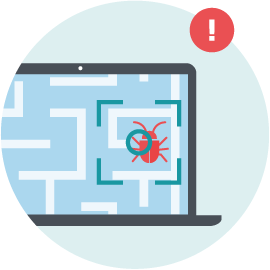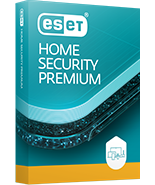What is antivirus?
Originally, an antivirus program was a piece of software that detected and sometimes removed computer viruses from infected devices, whereby it also helped stop further propagation of the malicious content. That was mostly in the 1990s and in the beginning of the 2000s. However, with the dramatic growth in numbers of malware in other categories, antivirus programs have evolved into complex security solutions.
To ensure their users’ security, most contemporary protective products use multiple technologies. These allow them to combat a wide range of malicious activities, such as spying, keylogging, credential stealing, unauthorized cryptocurrency mining, unwanted encryption of files (by ransomware), information extraction (by banking Trojans), spam and scams as well as other forms of cyberattacks.
Read more

How does a modern cybersecurity solution work?
In the very distant past, most antivirus software relied heavily on scan strings (often referred to as “signatures”) that described known malware variants. However, established vendors rapidly augmented these scan strings with much more sophisticated detections based on information gathered by various technologies and approaches such as emulation, heuristics and behavior analysis, to be able to spot even previously unseen variants and families.
This intelligence amended by inputs from machine learning algorithms, sandboxing, in-cloud reputational checks as well as other technologies, allows current security products to detect and block most emerging and suspicious items directly at the endpoint.
All these systems are necessary, especially because of the number of suspicious samples: according to ESET’s telemetry, hundreds of thousands surface each day. However, no technology is a silver bullet that can solve all security issues by itself. Human expertise is therefore still one of the cornerstones of malware research and analysis, essential for achieving high detection rates while keeping false positives as low as possible.

What are the benefits of using a modern cybersecurity solution?
A reliable security solution with multiple layers of advanced technologies can detect, neutralize and remove even deeply embedded malware, protect users from ransomware, spyware, spam, phishing and other social engineering techniques, and is also able to identify attackers’ attempts to exploit vulnerabilities in the system.
This is especially valuable in the current environment, where threats often use sophisticated concealment techniques, can bury themselves deep in the system or act so discreetly that a typical user is very unlikely to notice them or their activities before it is too late.
Read more
ESET offers you an award-winning security
ESET HOME Security Premium
owerful, multilayered protection to encrypt sensitive data, manage passwords easily, secure online transactions and more. A user-friendly solution for enhanced privacy online. Secures Windows, macOS, Android, and iOS devices.




